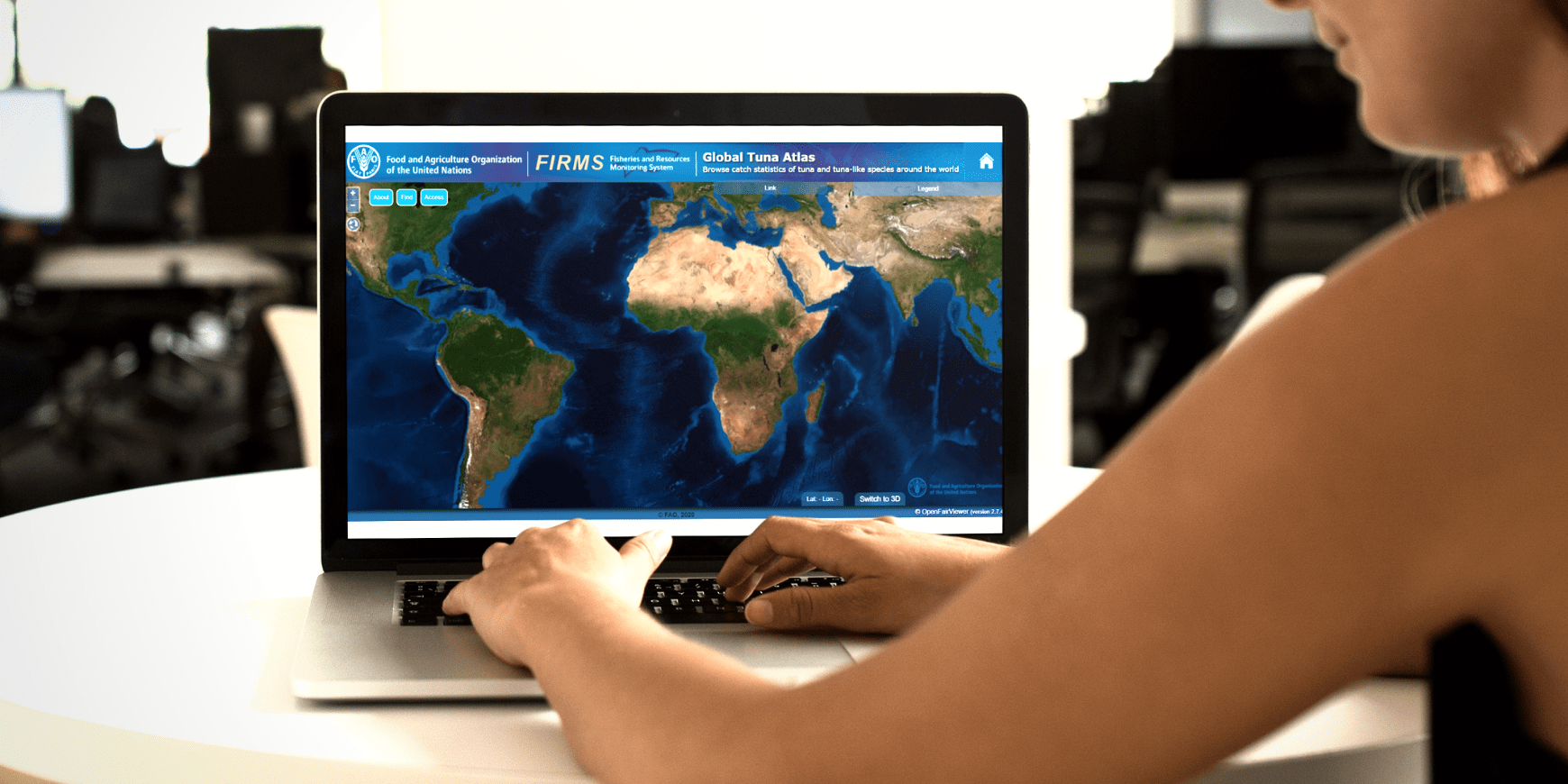The EU funded Blue-Cloud H2020 project contributed to advancing the interoperability of fisheries data. The FAO FIRMS Global Tuna Atlas will support and improve fisheries management across the globe.
On May 2nd, World Tuna day, the Information and Knowledge management team (NFISI) of FAO's Fisheries and Aquaculture Division officially released the FAO FIRMS Global Tuna Atlas (GTA).
The Atlas is under the governance of the FIRMS (FIsheries and Resources Monitoring System) partnership, through which data providers from the five Tuna Regional Fisheries Management Organizations collaborated and agreed on the harmonisation and sharing of their public fisheries data. FAO and IRD France collaborated on the services to merge all datasets. The objective of FIRMS is to provide high-quality public information on the global monitoring and management of fishery marine resources, with the GTA focusing on a global, authoritative, and standardised overview of historic tuna and related fisheries catch.
The Atlas was made possible through support from a range of H2020 projects including Blue-Cloud, and it shares many components with the Blue-Cloud Fisheries Atlas Virtual Lab.
“The FIRMS Global Tuna Atlas is an innovative web-product disseminating in an attractive way authoritative public data on tuna fisheries. Its achievement was only possible thanks to a strong and long-lasting partnership bringing a broad range of expertise - including Blue-Cloud. By greatly facilitating access to high quality and high-resolution data, we believe that the Atlas will serve the science that the ocean needs to help address issues such as adaptation to climate change, or sustainable fisheries management.” said Marc Taconet, Secretary of the FIRMS Partnership, and Team Leader, Information and Knowledge management, FAO Fisheries and Aquaculture Division
The Atlas was presented in an internal seminar of the FAO Fisheries and Aquaculture Division, with invited representatives of Regional Fisheries Management Organisations (RFMOs).
The Atlas offers a comprehensive view over the catches of tuna and tuna-like species - going as far back as 100 years in some areas. The Atlas disseminates data on 50 common species (however featuring information for up to 150 species in total). The aim was to release an open and FAIR principles based product, and this was achieved by combining Dublin Core, DataCite (for DOI's), and especially ISO-TC211 / OGC standards for geographic information management. The same methodology is already applied to other data domains, even beyond fisheries.
The GTA took nearly a decade to reach its maturity. Alongside and beyond IT innovation, the team had to adapt the governance structure for long term sustainability, collaborate with standards setting bodies (CWP), align different organisational views and data structures, and develop the R based data harmonisation flows.
With the support from Blue-Cloud, the Global Tuna Atlas made a great step forward for the interoperability of fisheries data, not only for tuna, but for a wide range of fisheries and related domains. The Atlas presents an example of how a Blue-Cloud VLab such as the Fisheries Atlas can be customised to meet specific community needs. In the Fisheries Atlas we will continue to develop FAIR data services that can contribute to the GTA future evolution and to similar products such as regional fisheries atlases.
Discover the Global Tuna Atlas
